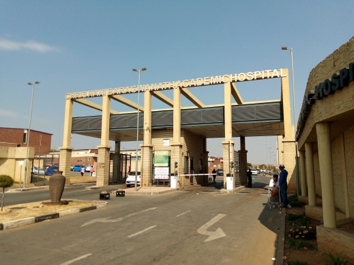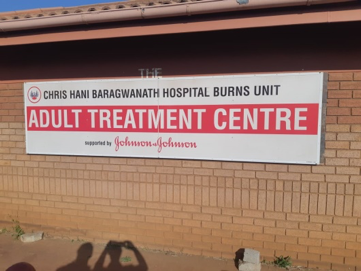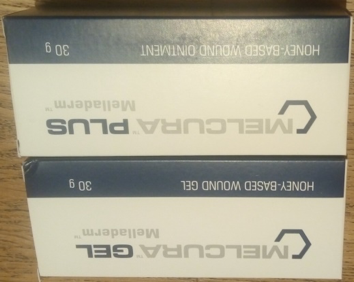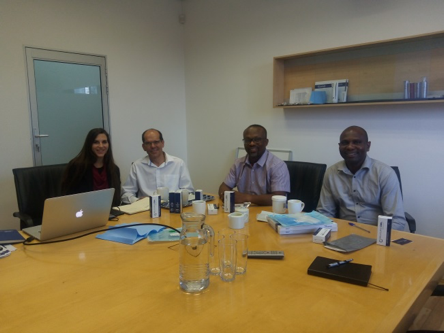Dr. Edwin M.T. Yenli and Dr. Etuh Ighohwo from Tamale visit Dr Rachel Moore in Johannesburg
An educational visit was recently arranged for surgeons based at the NIHR Global Surgery Unit hub in Tamale, Ghana, to visit the hub in South Africa and observe wound dressing practices. The visit was funded as part of the NIHR Global Surgery Unit’s Pump Priming Surgical Research Awards initiative which is aiming to increase research capacity in our partner countries.
In August 2019, Dr. Edwin Mwintiereh Ta-ang Yenli and Dr. Etuh Ighohwo visited Chris Hani Baragwanath Academic Hospital.
You can read a brief account of their visit below
Chris Hani Baragwanath Academic Hospital is a 3,400 bed hospital in the Soweto area of Johannesburg. It is one of the 40 Gauteng provincial hospitals, financed and run by Gauteng Provincial Health Authorities. Every year, about 150,000 inpatients and 500,000 patients’ cases are registered. It serves as a teaching hospital to the University of Witwatersrand Medical School
On first morning of our stay, the manager of the SA hub, Madam Ncamsile Nlabathi, assigned Mr. Nkululeko Nsesi to drive and guide us throughout the period of our stay.
At the adult burn unit, we met Professor Muganza. After exchanging pleasantries and introducing ourselves, we started the business of the day:
1.Our introduction by Professor Muganza to members of staff as he took us round to see various section of the unit
2.Thereafter, he asked us the reason prompting our visit to the unit:
- To observe how honey is being used for wound care
- To know the type/source of honey they use in their facility
- To link us up with the source of the honey
In his response, he explained that they are using two type of medical honey (melladerm plus & melladerm gel) produced by a company –MEDIKA SA Ltd located in South Africa and promised to introduce us to representative of the company next day. He further explained to us indications for the use of both preparations and the outcomes of treatment- which were very satisfactory according to him.
3.We were later allowed to observe the application of the melladerm plus/gel by nurses in the dressing of several patients with burn wound
Day 2 with Professor Muganza was as follows:
1.Meeting with representatives of MEDIKA SA. Ltd.
2.Ward round.
3.Power point presentation on the use of melladerm plus/gel and outcomes of treatment.
4.Further observation of wound dressing using melladerm plus by nurses
We were involved in all the above activities and were very rewarding. The representative of MEDIKA SA Ltd. Scheduled a meeting with us at their factory site next day for discussions.
After the morning’s activities we took time out to visit the Apartheid Museum.
Day 3 afforded us an opportunity to pay a visit to MEDISKA SA- The factory that produces the medical honey. It is located at Southern Implants Office in a suburb Pretoria; a journey of one and half hour from our hotel. At the factory premises, we were received into their conference room by the trio of Mr. Pierre Botha (Group Financial Manager), Dr. Malan De Villiers (Managing Director) and Danielle de Villiers (Sales representative).
Following the initial introduction of ourselves, Danielle made several power point presentations about the company and various products of the factory including melladerm plus and melladerm gel. We realize from the presentation that melladerm plus/gel contain some additives-vitamin C, E, Aloe barbadensis (5%), Zinc oxide (15%), Calendula officinalis (40%), in addition to honey (48%). Quite aware of the role these agents play in wound healing, Dr.Yenli enquired if product containing honey alone could be produced for the sake of his research; unfortunately this does not yet seem feasible. Thereafter, we were given samples of the various products for trial. We also took a quick tour of the factory to see some of the products at various stages of production
On our final day, we returned to the adult burn unit again to meet Professor Mungazi and his team. Dr.Yenli was keen to meet with his colleagues at the urology department and we were able to meet with the departmental head, Dr Sean Doherty, who took us round the urology ward, operating theater and many other sections of the hospital. Ideas and experiences were being shared and at the same time we were introduced to members of staff. Finally, we signed the visitor’s book before returning to the burns unit. At the burn unit, we discussed outcome of our visit to MEDIKA SA with prof Mungaza, had some pictures with him and the matron of the unit.
Eventually, we were bided fare well by members of staff of the adult burn unit as we depart South Africa to return home to Ghana next day.
Conclusion
We had exposure in the use of honey based wound dressing in a center that had over ten years of experience in the use of this product. We noticed the product was easily accessible and it did improve healing time. The unit has not yet reported its finding in the scientific literature in the form of published manuscripts. We are optimistic that our micro study on honey wound dressing (perhaps using the brand Melcura Meladerm), will provide insight to the scientific community and also provide a strong body of evidence necessary for recommendation of honey wound dressing for low and middle income countries.











Leave A Comment